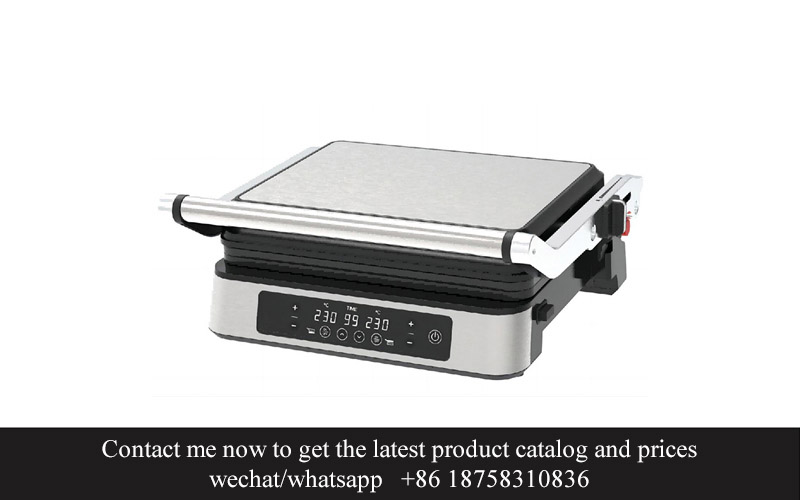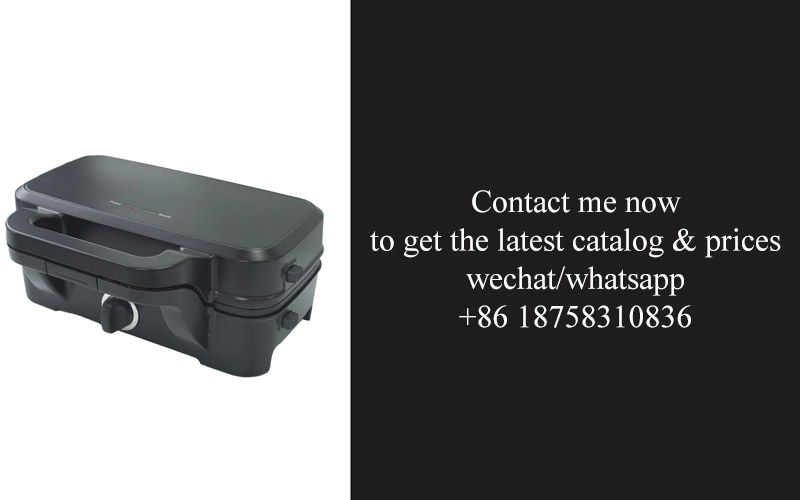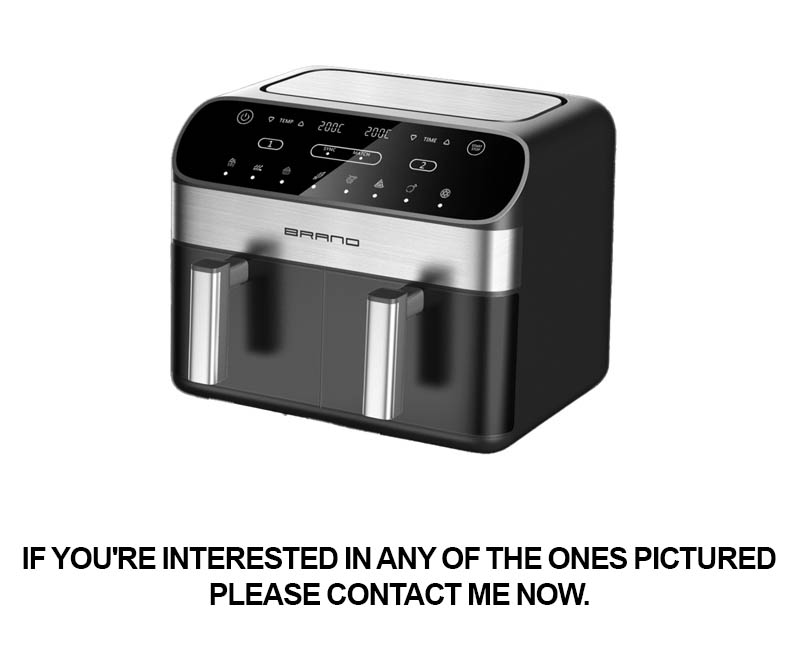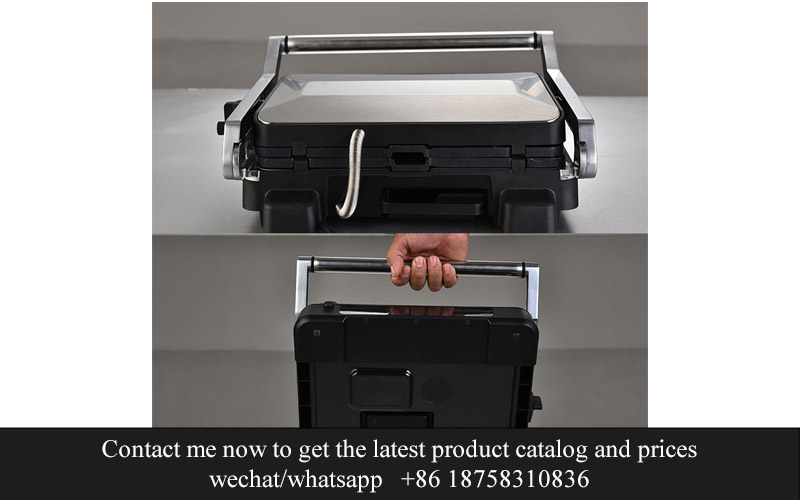Address
304 North Cardinal
St. Dorchester Center, MA 02124
Work Hours
Monday to Friday: 7AM - 7PM
Weekend: 10AM - 5PM
Address
304 North Cardinal
St. Dorchester Center, MA 02124
Work Hours
Monday to Friday: 7AM - 7PM
Weekend: 10AM - 5PM

The kitchen appliance industry, a cornerstone of modern household life, has been witnessing a remarkable transformation. As consumer demands evolve and technological advancements surge, the landscape of kitchen appliances is reshaping itself. This shift has given rise to a new wave of innovation, strategic partnerships, and challenges for suppliers. The European and American markets, in particular, are at the forefront of this revolution, driving the trends and setting the pace for the global appliance industry. This exploration delves into the intricacies of these markets, highlighting the latest trends, the impact of consumer preferences, and the success stories that have paved the way for future growth.
The kitchen appliance market has undergone a significant transformation over the years, and one of the most notable trends is the rise of import substitution. This shift, driven by various factors, has become a pivotal strategy for manufacturers and suppliers in both the European and American markets.
Consumers are increasingly seeking locally produced appliances that offer quality and innovation at competitive prices. The demand for domestic products has surged as consumers become more environmentally conscious, supporting local economies, and looking for products that align with their values. This shift has given rise to a wave of import substitution, where local suppliers step up to meet the growing demand.
The economic factors at play are substantial. With trade tensions and fluctuating global supply chains, the cost of importing appliances has risen. This has made it more viable for local manufacturers to produce similar products that can compete on price and quality. As a result, we’re seeing a surge in investment in domestic production facilities and technology.
Innovation is another key driver behind the import substitution trend. Local suppliers are not only meeting the basic needs of consumers but are also pushing the boundaries of what’s possible in kitchen appliances. From energy-efficient designs to smart technology integration, these suppliers are not just filling a gap left by imports; they are setting new standards.
The European market, in particular, has seen a significant increase in import substitution. Countries like Germany, Italy, and the UK are leading the charge, with manufacturers focusing on sustainability and energy efficiency. The push for greener living spaces has led to a demand for appliances that are not only eco-friendly but also durable and long-lasting.
Similarly, in the United States, there’s a growing trend towards supporting local manufacturers. American consumers are increasingly valuing appliances that are made in the USA, not just for the economic benefits but also for the quality and reliability. This trend has prompted domestic suppliers to invest in research and development, leading to innovative new products that cater to the latest consumer demands.
The role of local suppliers in this import substitution program is critical. These suppliers are not just competing with international brands; they are often developing unique products that appeal to niche markets. By understanding local consumer preferences and trends, they are able to create appliances that resonate with their target audience.
Data from recent market analyses indicates that the growth rate of import substitution in kitchen appliances is substantial. For instance, a report by MarketResearch.com suggests that the domestic kitchen appliance market in Europe is expected to grow at a CAGR of 3.5% from 2021 to 2026. This growth is being fueled by a combination of factors, including the rising middle class, urbanization, and the increasing focus on health and wellness.
One of the challenges that local suppliers face is the need to invest in advanced manufacturing technologies. However, this challenge is also an opportunity for innovation. Suppliers are adopting cutting-edge technologies such as 3D printing, robotics, and IoT (Internet of Things) to improve production efficiency and create more sophisticated products.
Another critical aspect of import substitution is the collaboration between suppliers and retailers. By working closely together, they can ensure that the right products are available at the right time and place. This collaboration also helps in understanding market dynamics and consumer behavior, allowing suppliers to tailor their offerings accordingly.
In conclusion, the rise of import substitution in the kitchen appliance industry is a testament to the evolving consumer landscape and the changing economic environment. Local suppliers are not just meeting a demand; they are shaping the future of the kitchen appliance market. As the industry continues to evolve, it will be fascinating to see how these suppliers innovate and adapt to the new normal.

The European and American kitchen appliance industries have seen a remarkable transformation over the years, shaped by evolving consumer preferences, technological advancements, and economic shifts. This dynamic landscape is a complex tapestry of growth, innovation, and adaptation.
Consumer demands have shifted from basic functionalities to sleek designs and smart features. Consumers today are not just looking for appliances that cook or clean efficiently; they are seeking smart, energy-efficient, and aesthetically pleasing products that integrate seamlessly into their homes. This shift has led to a surge in the demand for smart kitchen appliances, which are not only user-friendly but also provide connectivity and integration with other smart home devices.
In the United States, the market has been traditionally driven by innovation and consumer confidence. American consumers are willing to invest in high-quality, premium appliances, which has attracted numerous global players to the market. However, this competition has also led to a focus on differentiation through brand identity and customer service. Brands that can offer a unique value proposition or superior after-sales support often secure a loyal customer base.
In Europe, the market is characterized by a diverse range of cultures and preferences, which can influence the types of appliances that are in demand. For instance, countries like Germany and Italy are known for their strong culinary heritage, leading to a preference for high-quality cooking appliances. Meanwhile, the Scandinavian countries have a penchant for eco-friendly and energy-efficient appliances. This diversity requires suppliers to understand local markets deeply and tailor their product offerings accordingly.
Economic factors also play a pivotal role in shaping the market dynamics. In recent years, there has been a noticeable trend towards import substitution, where local manufacturers are stepping up to meet domestic demand. This is particularly true in Europe, where several countries are actively promoting domestic production to reduce reliance on imports and stimulate local economies.
The rise of e-commerce has further altered the landscape of the kitchen appliance industry. Online platforms have made it easier for consumers to compare prices, read reviews, and make informed purchases. This increased accessibility has led to a more price-sensitive consumer, pushing manufacturers to find cost-effective solutions without compromising on quality.
Regulatory changes and environmental concerns are also driving the market. In both Europe and the U.S., there are stringent regulations regarding energy efficiency and safety standards for appliances. Manufacturers must comply with these regulations, which often require them to invest in new technologies and production methods. Additionally, the growing awareness of environmental issues has led to a demand for appliances that are recyclable and have a lower carbon footprint.
Technological advancements have been a constant in the kitchen appliance industry. The integration of the Internet of Things (IoT) into appliances has allowed for a new wave of connectivity and smart functionalities. From smart refrigerators that can order groceries to ovens that can be controlled via smartphone, the industry is rapidly evolving to meet the needs of a tech-savvy consumer.
The retail landscape has also undergone changes. The rise of large home improvement stores and specialty kitchen appliance retailers has created a more competitive environment. These retailers often have in-store showrooms where customers can interact with appliances before making a purchase, which can significantly influence buying decisions.
Supplier relationships are becoming increasingly important. As manufacturers look to source materials and components locally to support import substitution programs, they must find suppliers who can meet high quality standards and deliver on time. This has led to a greater emphasis on building strong partnerships and supply chain management.
In conclusion, the European and American kitchen appliance industries are dynamic and multifaceted, with numerous factors influencing their development. From consumer preferences and economic trends to technological advancements and regulatory changes, understanding these market dynamics is crucial for suppliers and manufacturers looking to succeed in this ever-evolving sector.

In the ever-evolving landscape of kitchen appliances, innovation is not just about creating new products; it’s about redefining how we interact with our kitchens. Here are some fresh and innovative ideas that are reshaping the kitchen appliance industry:
Smart Integration with Smart Homes: Appliances that seamlessly integrate with smart home systems are not just a convenience but a necessity. Imagine a refrigerator that not only keeps your food fresh but also orders groceries based on your consumption patterns or a stove that adjusts its heat settings based on the recipe you’re following, learning from your habits over time.
Eco-Friendly Design: As sustainability becomes a key concern for consumers, appliances with eco-friendly designs are gaining traction. This includes energy-efficient models that reduce utility bills and appliances made from recycled materials. Think of dishwashers that use less water and energy or ovens that capture cooking odors to minimize air pollution.
Health and Wellness Features: Kitchen appliances are increasingly incorporating health and wellness into their design. For instance, a blender that not only crushes ice and fruits but also steams vegetables to retain nutrients, or a refrigerator with a built-in air purifier to maintain the quality of the air inside.
Personalized Cooking Assistants: The rise of artificial intelligence has paved the way for appliances that can learn your preferences and cooking style. These smart appliances could range from a coffee maker that adjusts its temperature based on your morning routine to an oven that suggests recipes tailored to your dietary restrictions.
Interactive User Interfaces: Modern appliances are moving beyond the simple digital display. Imagine a kitchen where your oven, fridge, and microwave communicate with each other through a holographic interface, allowing you to manage your kitchen tasks with simple gestures or voice commands.
Modular Kitchen Systems: The kitchen of the future may not be about a single, monolithic appliance but a modular system where different components can be added or removed based on your needs. This could include a countertop that can be transformed into a baking station or a sink that can expand to include a built-in juicer or food processor.
Energy Harvesting Appliances: A novel approach to sustainability involves appliances that can generate their own energy. For example, a countertop that uses kinetic energy from the movement of dishes to power its built-in lighting or a stove that captures excess heat and uses it to preheat the next dish.
Advanced Food Storage Solutions: Innovations in food storage are not limited to refrigerators. Imagine a pantry system that uses UV light to extend the shelf life of your produce, or a spice rack that automatically measures and dispenses the right amount of seasoning for your recipe.
Customizable Appliance Finishes: Personalization extends to the aesthetics of kitchen appliances as well. Suppliers are now offering customizable finishes and materials, allowing homeowners to match their appliances to their kitchen decor or even their personal style.
Smart Kitchen Management Apps: Finally, the rise of mobile apps is making kitchen appliances more intuitive than ever. These apps can provide real-time cooking instructions, monitor appliance performance, and even offer tips for energy-saving and recipe creation.
The kitchen appliance industry is at a pivotal point, where technology and design are merging to create appliances that are not just tools but companions in the daily routine. These innovative ideas are just the beginning, as the future kitchen promises to be a place where convenience, sustainability, and personalization meet.

In recent years, the kitchen appliance industry has seen a surge in technological advancements and consumer demands. Analyzing the latest industry trends and data reveals several key developments shaping the market.
Smart Integration and ConnectivityThe integration of smart technology into kitchen appliances has become a significant trend. Consumers are increasingly seeking appliances that can be connected to their smartphones or home automation systems. Data shows a rise in sales of smart fridges, ovens, and dishwashers, with features like voice control, remote monitoring, and energy efficiency becoming standard.
Sustainability and Eco-Friendly DesignsWith growing environmental concerns, sustainability has become a major focus in the kitchen appliance industry. Manufacturers are now incorporating eco-friendly materials and energy-saving technologies into their products. Data indicates a growing market for appliances with Energy Star ratings and certifications from organizations like the European Union’s Eco-label.
Health and Wellness FeaturesAs health consciousness continues to rise, kitchen appliances are being designed with wellness in mind. For instance, air fryers and slow cookers have gained popularity due to their ability to cook healthier meals with less oil and fat. Data from market research firms highlights a surge in sales of these types of appliances, reflecting a shift towards healthier lifestyles.
Customization and PersonalizationPersonalization is another trend gaining traction. Consumers are looking for appliances that can be customized to their specific needs and preferences. Smart appliances that can be programmed for individual cooking times and temperatures, or that come in a variety of colors and finishes, are becoming more common. Data suggests that these customizable features are influencing purchasing decisions.
Energy Efficiency and EfficiencyEnergy efficiency remains a crucial factor in the kitchen appliance market. As energy costs rise and environmental concerns deepen, consumers are more likely to invest in appliances that save energy. The latest data shows a steady increase in the sales of energy-efficient models, with consumers willing to pay a premium for long-term savings.
Miniaturization and Compact AppliancesThe trend towards smaller living spaces and urban living has led to the development of compact and miniaturized kitchen appliances. These products are designed to save space while still offering the same functionality as larger models. Market research indicates a rising demand for these space-saving appliances, particularly in Europe and Asia.
Health Monitoring and Safety FeaturesSafety and health monitoring are becoming integral parts of kitchen appliances. Smart cookers and ovens can now alert users to potential hazards like overheating or gas leaks. Data from safety organizations reveals that these features are not only increasing consumer confidence but also driving sales.
Artificial Intelligence and Machine LearningThe use of artificial intelligence (AI) and machine learning in kitchen appliances is on the rise. Appliances are now capable of learning user preferences and adjusting settings accordingly. For example, smart refrigerators can analyze purchase patterns and suggest recipes. The adoption of AI and machine learning is expected to grow, with manufacturers investing heavily in these technologies.
Smart Cooking and Meal PreparationCooking appliances are becoming more sophisticated, offering users the ability to cook a variety of dishes with minimal effort. Smart ovens and cooktops can now simulate the cooking processes of professional chefs, while smart mixers and food processors are making meal preparation easier and more intuitive. Data indicates a growing market for these high-tech cooking tools.
Interactive and Educational FeaturesInteractive features are becoming more prevalent in kitchen appliances, providing users with educational content and interactive cooking experiences. For example, smart appliances can offer recipe suggestions, cooking tips, and even interactive cooking lessons. These features are appealing to tech-savvy consumers and are expected to become standard in the near future.
The kitchen appliance industry is rapidly evolving, with a focus on technology, sustainability, and consumer convenience. As these trends continue to shape the market, it’s clear that the future of kitchen appliances will be characterized by innovation and adaptability to changing consumer needs.

In the evolving landscape of kitchen appliance manufacturing, local suppliers play a pivotal role in the success of import substitution programs. These partnerships are not just about supply and demand; they are about innovation, quality, and the ability to adapt to changing consumer needs. Here’s a closer look at how these strategic alliances are reshaping the industry.
The Shift Towards Local Manufacturing
As global trade dynamics shift, there’s a noticeable trend towards local manufacturing. This shift is driven by various factors, including concerns over supply chain reliability, environmental impact, and the desire to support local economies. Local suppliers are stepping up to fill the gap left by international brands, offering a range of products that cater to local tastes and preferences.
Customization and Market Adaptation
One of the key strengths of local suppliers in import substitution programs is their ability to customize products. Unlike large multinational corporations, local suppliers can quickly adapt to market demands, producing appliances that are tailored to the specific needs of their customers. This agility allows them to stay ahead of the curve, offering innovative solutions that resonate with local consumers.
Quality Control and Sustainabilty
Local suppliers often prioritize quality control and sustainability in their manufacturing processes. By sourcing materials locally, they can ensure a shorter supply chain, which reduces the risk of quality issues. Additionally, focusing on sustainable practices not only benefits the environment but also enhances the brand’s reputation, making it more appealing to environmentally conscious consumers.
Collaboration in Research and Development
Strategic partnerships between local suppliers and appliance manufacturers are fostering a culture of innovation. By working together, these entities can invest in research and development, leading to the creation of cutting-edge kitchen appliances. This collaboration often results in products that are not only more efficient but also more user-friendly, addressing the evolving needs of consumers.
Building Stronger Communities
Import substitution programs often have a positive ripple effect on local communities. Local suppliers create jobs, stimulate economic growth, and contribute to the overall development of the region. This community engagement strengthens the ties between suppliers and consumers, fostering loyalty and a sense of pride in local products.
Navigating Trade Policies and Regulations
As part of import substitution programs, local suppliers must navigate complex trade policies and regulations. This requires a deep understanding of both local and international laws, as well as the ability to adapt to changes in trade agreements. Suppliers that excel in this area are better positioned to capitalize on opportunities presented by import substitution programs.
Investing in Training and Education
To maintain a competitive edge, local suppliers are investing in training and education programs for their workforce. By equipping employees with the latest skills and knowledge, suppliers can improve production efficiency and ensure that their products meet the highest standards of quality. This investment also helps in retaining talent and reducing turnover rates.
The Role of Technology
Technology is a game-changer for local suppliers in import substitution programs. By adopting advanced manufacturing technologies, suppliers can streamline operations, reduce costs, and improve product quality. Moreover, the integration of smart technology into kitchen appliances is becoming increasingly important, and local suppliers are capitalizing on this trend to offer innovative solutions.
Consumer Trust and Branding
Building consumer trust is crucial for local suppliers in import substitution programs. By ensuring product reliability, offering excellent customer service, and engaging in transparent business practices, suppliers can establish strong brands that resonate with customers. This trust is a cornerstone of long-term success in the competitive kitchen appliance market.
In conclusion, the role of local suppliers in import substitution programs is multifaceted. From customization and sustainability to innovation and community engagement, these partnerships are driving the transformation of the kitchen appliance industry. As the landscape continues to evolve, the strength of these strategic alliances will be key to the success of import substitution efforts.

In the ever-evolving landscape of the kitchen appliance industry, consumer preferences play a pivotal role in shaping supplier strategies. These preferences are influenced by a myriad of factors, from technological advancements to cultural shifts, and from economic conditions to environmental concerns. Here’s a closer look at how these preferences are impacting supplier strategies.
Technology Integration and Smart AppliancesConsumers are increasingly seeking kitchen appliances that not only perform their basic functions but also offer advanced technological features. Smart appliances, capable of integrating with home automation systems, are becoming a norm. Suppliers are responding by developing appliances with built-in Wi-Fi, voice control, and energy-saving capabilities. This shift requires suppliers to invest in research and development to keep up with the latest technology trends.
Energy Efficiency and SustainabilityWith growing environmental consciousness, energy efficiency has become a key consumer preference. Appliances that consume less energy not only reduce utility bills but also contribute to a greener planet. Suppliers are focusing on creating more energy-efficient models, often by incorporating eco-friendly materials and designs. This trend has led to the rise of appliances with LED lighting, energy-saving modes, and even appliances that can be powered by renewable energy sources.
Aesthetic Appeal and DesignThe aesthetic aspect of kitchen appliances has gained significant importance. Consumers are no longer just looking for functionality; they seek appliances that complement their kitchen decor. Sleek designs, color options, and customizable features are becoming more popular. Suppliers are responding by offering a wider range of design choices, from minimalist stainless steel to colorful and artistic units, ensuring that their products appeal to a diverse market.
Health and Safety FeaturesHealth and safety concerns are also driving consumer preferences. Appliances that offer features like child locks, non-toxic materials, and safety certifications are in high demand. Suppliers are enhancing their product lines with these features, recognizing that safety is a top priority for many consumers. This has led to a surge in the production of appliances with advanced safety technologies, such as anti-clog filters in dishwashers and automatic shut-off functions in ovens.
Customization and PersonalizationThe rise of e-commerce has made it easier for consumers to shop for appliances online, and with that comes a desire for customization and personalization. Suppliers are catering to this trend by offering customizable options, such as adjustable shelves in refrigerators or programmable settings on cooking appliances. This allows consumers to tailor their appliances to their specific needs and preferences.
Ease of Use and MaintenanceConsumers are looking for appliances that are not only powerful but also user-friendly. Features like intuitive interfaces, clear instructions, and easy-to-clean surfaces are becoming more common. Suppliers are focusing on simplifying the user experience, making appliances more accessible to a broader range of consumers, including those who may not be as tech-savvy.
Economic Factors and Budget SensitivityEconomic conditions play a significant role in shaping consumer preferences. During times of economic uncertainty, budget sensitivity increases, and consumers may prioritize cost-effective appliances over high-end models. Suppliers must balance the need to offer affordable options with the desire to maintain quality and innovation.
Globalization and Cultural InfluenceThe interconnectedness of the global marketplace means that cultural influences are also at play. Consumers are exposed to a variety of kitchen appliance styles and features from around the world, which can influence their preferences. Suppliers are taking note of these cross-cultural trends and incorporating them into their product development.
In conclusion, the impact of consumer preferences on supplier strategies is multifaceted. From technological advancements to environmental concerns, aesthetic choices to economic factors, suppliers must be agile and innovative to meet the diverse needs of their customers. By understanding and adapting to these preferences, suppliers can ensure that their products remain competitive and relevant in the dynamic kitchen appliance industry.

In the world of kitchen appliances, several success stories have emerged where local suppliers have managed to substitute imports effectively. These tales of triumph not only highlight the importance of strategic planning but also underscore the role of innovation and market understanding. Let’s delve into a few notable examples.
1. The Italian Oven Revolution: Ariete’s RiseAriete, an Italian kitchen appliance brand, has made a significant impact by offering high-quality, locally produced ovens that rival those from international giants. Their success can be attributed to a deep understanding of the Italian consumer’s preference for traditional cooking methods combined with modern convenience. By focusing on energy-efficient and eco-friendly designs, Ariete has not only captured the domestic market but has also begun to export to other European countries.
2. The Korean Kitchenware Success Story: CuckooCuckoo, a South Korean company, has disrupted the global market with its innovative rice cookers and electric pressure cookers. By focusing on smart technology and user-friendliness, Cuckoo has managed to carve out a niche for itself. Their products, which are produced locally, have gained a strong following in North America and other parts of the world. The brand’s commitment to research and development has been instrumental in staying ahead of the curve.
3. The French Winemaking Machines: GaminGamin, a French company, specializes in high-end winemaking machines that are designed to mimic the traditional methods used in French vineyards. By focusing on the unique needs of winemakers and providing solutions that enhance both the quality and consistency of wine production, Gamin has become a go-to supplier for vineyards across the globe. Their local production not only supports the French economy but also ensures that their products meet the exacting standards of the French market.
4. The German Precision: WMF’s ApproachWMF, a German manufacturer, has long been associated with precision and quality in kitchen appliances. Their success in import substitution can be attributed to their dedication to innovation and their deep roots in the German manufacturing tradition. By focusing on products that cater to both professional chefs and home cooks, WMF has managed to maintain a strong presence in the European market. Their ability to adapt to the latest market trends and consumer preferences has been a key factor in their continued success.
5. The Spanish Market Leader: BalayBalay, a Spanish kitchen appliance brand, has managed to become a market leader in their home country by offering a wide range of products that cater to different consumer segments. From compact appliances for small kitchens to high-end ovens for professional chefs, Balay’s diverse product line has helped them capture a significant share of the Spanish market. Their focus on energy efficiency and sustainable design has also resonated with environmentally conscious consumers.
6. The Swiss Watchmaker’s Approach: GaggenauGaggenau, a Swiss luxury kitchen appliance brand, has leveraged their expertise in precision engineering and craftsmanship to become a global leader. By focusing on premium appliances that are as much works of art as they are tools for cooking, Gaggenau has set a new standard for luxury kitchen appliances. Their commitment to innovation and their ability to combine traditional Swiss craftsmanship with cutting-edge technology has made them a favorite among the world’s most discerning chefs and homeowners.
7. The Japanese Efficiency: ToshikoToshiko, a Japanese kitchen appliance brand, has made a name for itself by offering products that are not only efficient but also aesthetically pleasing. By focusing on the Japanese consumer’s desire for functionality and simplicity, Toshiko has developed a range of kitchen appliances that are both practical and stylish. Their ability to innovate within the constraints of space-conscious urban homes has made them a popular choice in Japan and beyond.
These case studies illustrate how local suppliers have successfully navigated the import substitution landscape. By understanding consumer preferences, focusing on innovation, and leveraging their local strengths, these companies have not only filled a gap in the market but have also set new benchmarks for quality and design. As the global market continues to evolve, these strategies are likely to become increasingly important for suppliers looking to thrive in a competitive landscape.

Navigating the competitive landscape of the kitchen appliance sector is a complex endeavor, fraught with challenges and opportunities. Suppliers must constantly adapt to changing consumer demands, technological advancements, and market fluctuations. Here’s a closer look at the multifaceted challenges and opportunities that suppliers face in this dynamic industry.
Consumer expectations are ever-evolving, with a growing emphasis on sustainability, energy efficiency, and smart technology integration. Suppliers must stay abreast of these shifts to remain relevant. The demand for eco-friendly appliances, for instance, has surged, compelling suppliers to invest in green manufacturing processes and materials. This shift not only aligns with global sustainability goals but also taps into a market segment that values environmental responsibility.
The rise of smart kitchen appliances has opened new avenues for suppliers. These devices, equipped with IoT capabilities, offer a plethora of features like remote monitoring and voice control. Suppliers that can integrate these advanced technologies into their product lines stand to gain a competitive edge. However, this also means investing in research and development to ensure compatibility, user-friendliness, and security.
Market fluctuations can be particularly challenging for suppliers. Fluctuating raw material prices, currency exchange rates, and economic instability can all impact profitability. Suppliers must be agile, with robust supply chains that can absorb these shocks. Diversifying suppliers and establishing long-term partnerships can mitigate risks associated with supply chain disruptions.
Regulatory compliance is another significant challenge. Different regions have varying standards for safety, energy efficiency, and emissions. Suppliers must navigate these regulations to ensure their products meet the necessary criteria. This often requires extensive testing and certification, which can be time-consuming and costly. However, compliance also presents an opportunity to build trust with consumers who value quality and safety.
The globalization of the kitchen appliance market has expanded opportunities for suppliers. Exporting products to new markets can significantly boost sales and revenue. However, this expansion also demands a thorough understanding of local consumer preferences and cultural nuances. Tailoring products to meet these specific needs can lead to increased market share and brand loyalty.
E-commerce has revolutionized the way consumers purchase kitchen appliances. Online sales platforms have become crucial channels for suppliers, offering a direct-to-consumer approach that can reduce costs and increase reach. Suppliers must adapt their marketing strategies to leverage the digital landscape, focusing on online advertising, social media engagement, and user-generated content.
The rise of subscription models in the appliance industry is another trend that presents both challenges and opportunities. Suppliers must consider how to integrate this service-based approach into their business models, potentially leading to long-term customer relationships and recurring revenue streams. However, it also requires a shift in focus from single-product sales to ongoing service and maintenance.
Innovation is a cornerstone of success in the kitchen appliance sector. Suppliers that can introduce new, unique features or functionalities gain a competitive advantage. This could involve anything from a sleek design that enhances aesthetics to a revolutionary cooking technology that improves efficiency. The challenge lies in balancing innovation with cost-effectiveness, ensuring that new products remain accessible to a wide range of consumers.
The integration of augmented reality (AR) and virtual reality (VR) into the sales process is an emerging opportunity. Suppliers can use these technologies to provide immersive product demonstrations, allowing customers to visualize how appliances will fit into their homes and function in their daily lives. This can lead to higher conversion rates and a more personalized shopping experience.
Lastly, the kitchen appliance sector is witnessing a surge in collaboration between suppliers and technology companies. This synergy can lead to groundbreaking product developments, such as appliances that can be controlled via smartphone apps or that learn from user habits to optimize performance. Suppliers that can foster these partnerships and leverage technology will be well-positioned to capitalize on the future of kitchen appliances.
In summary, the kitchen appliance sector is ripe with challenges and opportunities. Suppliers must navigate the complexities of consumer preferences, market dynamics, and technological advancements to thrive. By embracing innovation, adapting to new models of consumption, and fostering strategic partnerships, suppliers can not only overcome obstacles but also seize the numerous opportunities that the industry presents.

In the evolving landscape of the European and American kitchen appliance markets, the future holds a tapestry of challenges and opportunities that suppliers must navigate with a discerning eye. The integration of smart technology, the shift towards sustainability, and the rise of personalized consumer experiences are shaping the industry’s trajectory. Here’s a glimpse into the potential paths suppliers might take.
The integration of smart technology is not just a trend; it’s a revolution. Suppliers must adapt by offering appliances that can be controlled remotely, providing data analytics for energy efficiency, and even learning from user habits to optimize performance. This shift requires a focus on software integration and cybersecurity, ensuring that these devices are not only innovative but also secure.
Sustainability is becoming a cornerstone in the kitchen appliance sector. As consumers become more environmentally conscious, suppliers are under pressure to produce appliances that are energy-efficient, use recycled materials, and have a lower carbon footprint. This means investing in research and development for materials and processes that are more sustainable, and it also means rethinking the lifecycle of products to encourage recycling and reduce waste.
Personalization is another key factor. With the ability to customize appliances based on individual preferences and needs, suppliers can tap into a market that values unique solutions. This could mean offering modular designs that allow consumers to upgrade components or integrating features that cater to specific dietary requirements or cooking styles.
Innovation in user interface design is also crucial. Appliances that are intuitive and easy to use will appeal to a broader audience, including tech-savvy millennials and older consumers who may be less familiar with modern technology. Suppliers must focus on creating interfaces that are both visually appealing and functional, ensuring that the technology enhances the user experience rather than complicating it.
The competitive landscape is changing, and suppliers must be prepared to collaborate in new ways. Strategic partnerships with other companies, including software developers, material suppliers, and even food technology firms, can offer a competitive edge. By pooling resources and expertise, suppliers can create a more cohesive and innovative product line.
The rise of e-commerce has reshaped the distribution landscape. Suppliers must consider not only traditional retail channels but also online marketplaces and direct-to-consumer sales. This requires a flexible supply chain that can accommodate different sales models and customer expectations.
The globalization of the kitchen appliance market brings both challenges and opportunities. Suppliers must navigate international regulations and standards, ensuring compliance while also considering cultural differences in product design and marketing strategies. This global perspective can also open up new markets and opportunities for growth.
As the industry evolves, the role of data becomes increasingly significant. Suppliers who can harness data analytics to predict market trends, customer needs, and supply chain disruptions will be better positioned to make informed decisions. This includes using data to optimize inventory management, reduce costs, and improve customer satisfaction.
The future of kitchen appliances is also intertwined with the broader trends in home design and living spaces. As homes become more open and multifunctional, appliances will need to blend seamlessly into these environments, offering both aesthetic appeal and functionality. Suppliers must be ready to cater to these evolving design trends and integrate appliances into smart home ecosystems.
In conclusion, the future of kitchen appliances in the European and American markets is dynamic and multifaceted. Suppliers must embrace innovation, sustainability, personalization, and strategic partnerships to stay competitive. By adapting to changing consumer preferences and market dynamics, they can capitalize on new opportunities and overcome challenges, ensuring a bright and innovative future for the industry.